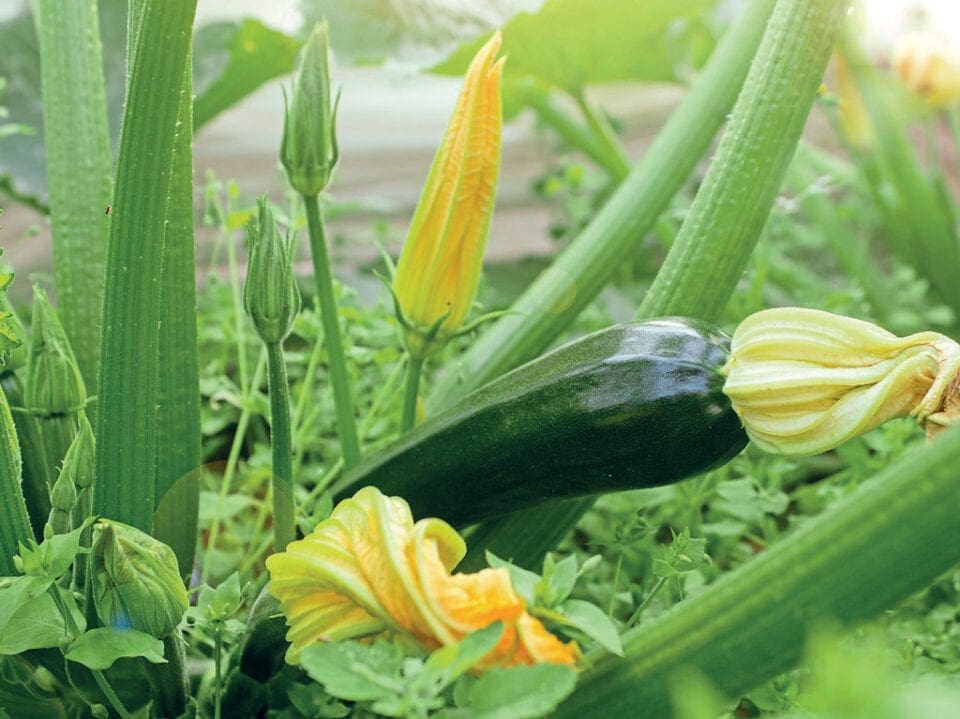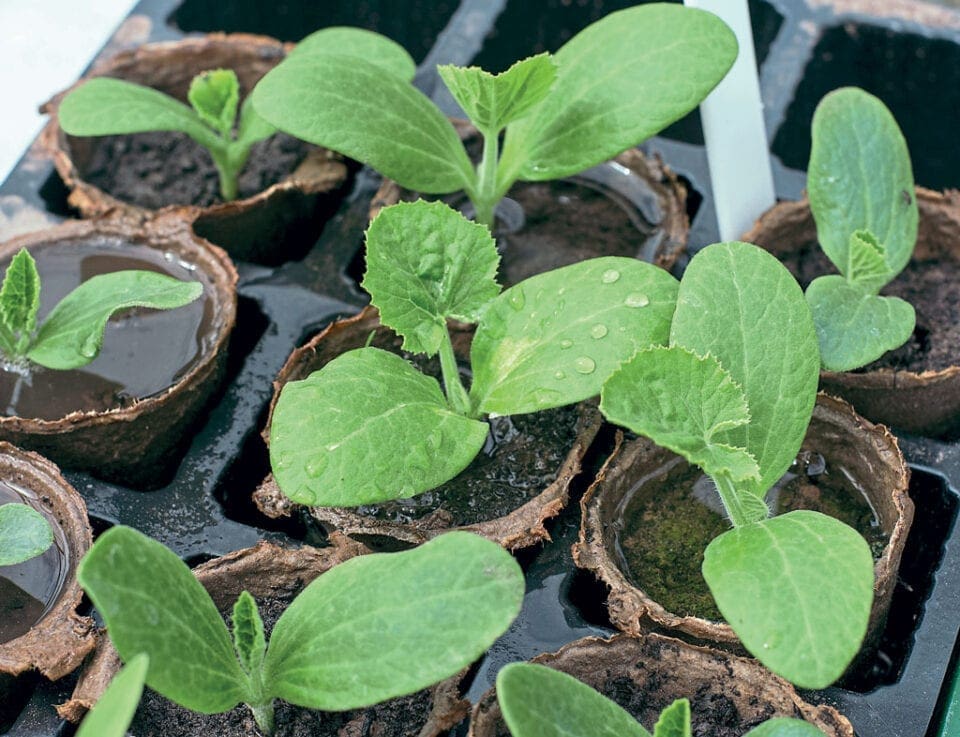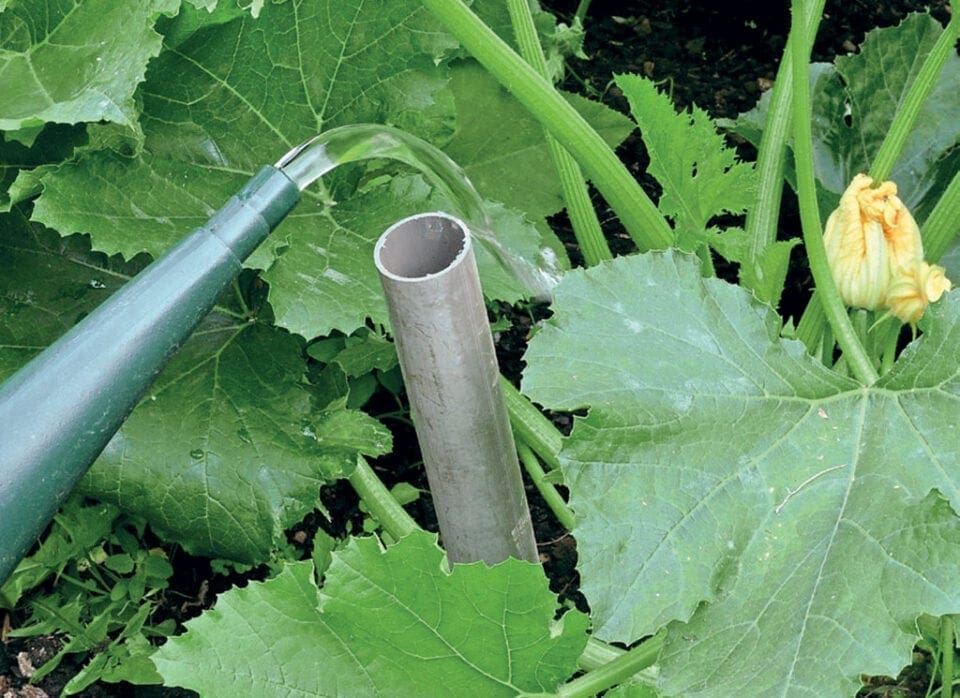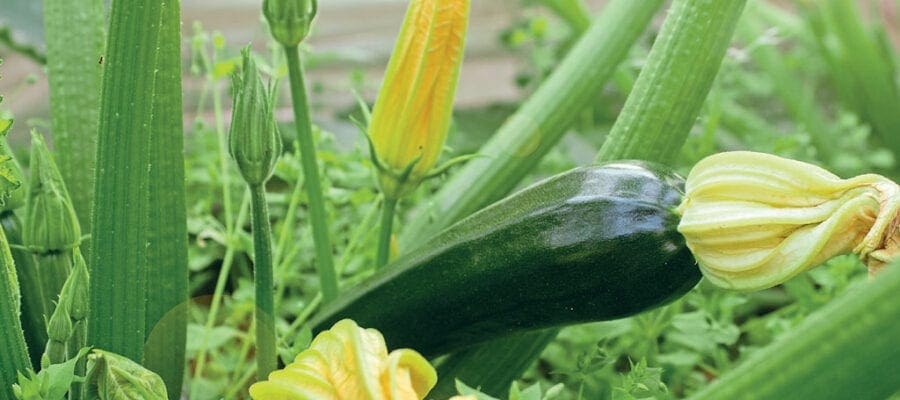
If you’re new to growing veg, courgettes may look like they could be a difficult crop to grow. The truth is, says Tony Flanagan, they’re one of the easiest and (be warned!) one of the most prolific.
I’m not sure exactly when courgettes started to become a popular veg but for many years now they have been a supermarket constant.
What you don’t tend see on the supermarket shelves, however, is much variation. If you look through the seed catalogues, you will see that the world of the courgette is quite varied: some green, some yellow, some striped, some round – spreaders and climbers.
What’s more, they are easy to grow and easy to maintain. You just need to be careful with how many plants you actually grow as courgette plants are notoriously productive.
Prepare the soil
For the best results with courgettes, make sure you have prepared the soil really well with lots of organic matter (well-rotted manure and/or home-made compost) – best applied in autumn, though spring is fine too if you haven’t got round to it.
What you don’t want is a soil that dries out too quickly as courgettes need plenty of water and a fertile soil. They like lots of sun too, so avoid growing in the shade if possible.

Sowing
Courgette seeds can be sown directly in the soil late May to early June, 2.5cm (1in) deep. The seedlings will need protecting from slugs in particular, and cover with a cloche if you have one for a week or two to protect from inclement weather as they settle in.
Plant two or three seeds 90cm (3ft) apart and take out two of these when large enough to handle, leaving the most robust one in position.
Personally, like many other growers no doubt, I prefer to start seeds off mid-April in modular cell trays (or 7.5cm /3in pots) filled with multipurpose compost. In this case, sow to a depth of about 1.5cm (½in).
The conventional wisdom is to sow them on their side (i.e. not flat) so that water doesn’t settle on top of them and cause them to rot before they germinate.
They will need a temperature of 18-21C (65-70F) to germinate, so use a heated propagator if you have one or place trays or pots on a warm windowsill.
Growing
Plants started off inside can be planted out in late May to early June when the risk of frost has passed. However, it’s best if you give your young plants a little time to acclimatize to outdoor conditions (‘hardening off’) by placing them outside in the day and bringing them in at night for about a week. Add a little general fertiliser to the soil if possible at the same time as planting.
One of the mistakes I’ve made in the past is planting my courgette plants too close together and also planting too many.
On the first point, courgette plants need plenty of space as they do spread out as they grow, so plant 90cm (3ft) apart. On the second point, how many courgettes do you want? One plant is enough for many, as they produce plenty of fruit.

It’s not uncommon with growers to end up with a glut, with friends and neighbours hiding behind their curtains when you turn up at their door with yet more courgettes!
Keep the area around the courgettes weed-free and any emerging at the centre of the plant you will need to lift by hand.
Water frequently to the soil at the base of the plant, avoiding the leaves as moisture resting on these can increase the risk of disease.
As baby courgettes start to develop, add a high potash feed (as in tomato food) every 10 days or so to support the growth of the fruit itself.
Harvesting
Courgettes are fast-growing once they get going and it’s quite common to find that what started off as a small courgette has turned into a large marrow seemingly overnight!
So harvest when they are small (15cm/6in as a guide), and frequently from mid-summer to mid-autumn. Cut them at the stem with a pair of secateurs or a sharp knife.
Courgette stems can be a little prickly so wearing gloves when harvesting is not a bad idea.





